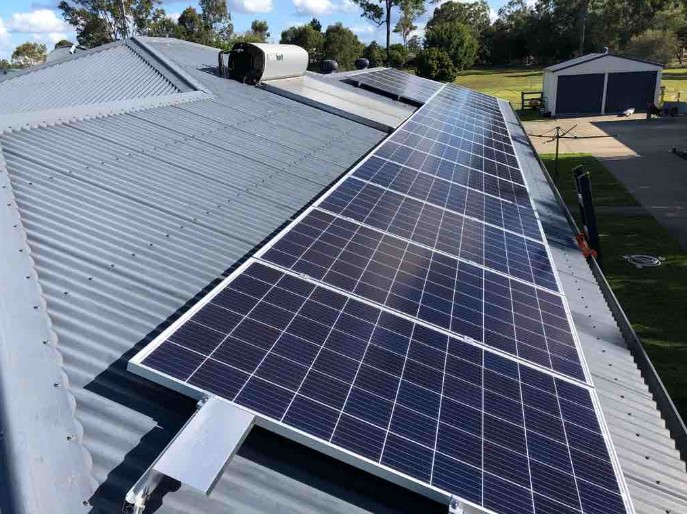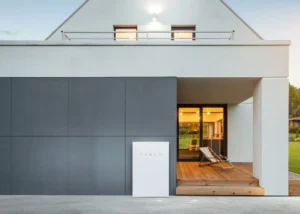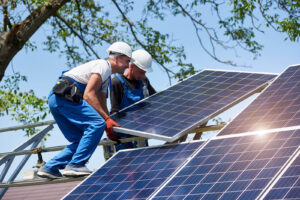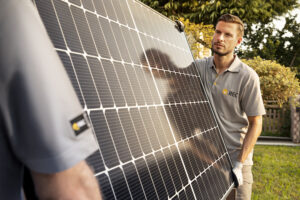So, you’re planning to have your brand new solar system installed. You’re excited for the benefits that you’ll get on your power bill, the planet-friendly step you’ve just taken, and to have this new asset to your home up and running. But there are a few extra things that are commonly overlooked as part of the solar system installation process, and one of those things is meter reconfiguration.
This often-forgotten detail can be a little confusing, so we’ve put together this guide to answer any and all questions you might have.
We want to make the whole solar journey easy and take away any confusion you might encounter along the way, down to the last detail. So, read on and discover what you need to know.
The Solar Summary: From Solar Generation to Smart Meters
No time to read the full article? We’ve got you. Here are our top 3 takeaways.
- Your home will need a ‘smart meter’ to work with your new solar system, and that smart meter will need to be reconfigured in line with your new system.
- If you don’t reconfigurate your meter, you’ll likely miss out on feed-in tariffs, and put yourself at risk of confusing, irrelevant charges from your power provider.
- We can help kickstart the reconfiguration process, but ultimately, your energy provider will be responsible for the installation.
The basics: What is an Electricity Meter?
Your electricity meter is how you can tell how much electricity you are using within your home – it measures and records the amount you’re using over a period of time. Back in the day, these were manually read by your electricity distributor, by physically sighting it. However, these days, ‘smart meters’ are more common – these eliminate the need for a person to come and physically read your meter, as they send the information automatically.
Smart meters can also provide more accurate ‘real time’ information about your energy usage, and can collect data on what times of day your energy consumption is highest, as well as detecting any patterns from week-to-week, month-to-month, season-to-season. These can be reconfigured to work with your solar power system.
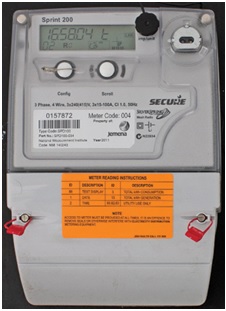
Traditional Meters – like the one pictured below with physical dials – are incompatible with your solar system. They cannot track any power you might export to the grid, and solar systems can literally turn the numbers on those dials backwards.
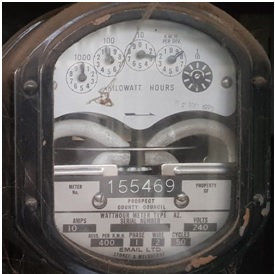
Will I need a new meter to support my solar installation?
If you have a traditional meter, yes! However, if you have an existing smart meter, you may only need to have it reconfigured.
How do I know if I’ll need a solar meter reconfiguration?
The answer here is simple: you must reconfigure your meter when you install a solar system.
If you’re switching from grid electricity to a new solar system, your meter is not programmed to not recognise any export of power. Even if you have an existing smart meter, it will need to be reconfigured.
The good news is that you’ll know right from the very start if you need to have a smart meter installed, and for those with an existing smart meter, we’ll help you understand the process of getting it reconfigured . As part of the earliest stage of working with us as your solar provider, we’ll conduct a thorough site inspection. At this point, we’ll be able to let you know what kind of meter you have and what changes will need to be made. The actual changeover, however, may not occur until after your solar panels have been installed.
What happens if I don’t reconfigure my meter connection after installing a solar system?
What this means for you is a loss in any potential tariff savings. Regardless of whether you have received export permission or not, under energy regulatory rules, you must have a bi-directional energy meter capable of measuring and recording how much grid energy you consume and how much generated energy you export back into the grid from your solar system. Only a smart meter can provide that ‘bi-directional’ capability, meaning that it will be capable of recording electricity passing through in both directions.
Only once your meter is reconfigured to be bi-directional, is when you can fully enjoy the benefits of your solar, without any consequences!
If you have an old dial meter, exporting solar energy into the grid will cause your meter to turn backwards. As your energy retailer can no longer calculate how much grid electricity you have used, your electricity retailer will then ‘estimate’ your next energy bill, which would eliminate any savings gained from your feed-in tariff.
What is a feed-in tariff and how can I make the most of it?
This solar feed-in tariff (FIT) incentive allows you to earn credits on your electricity bill for the excess electricity that your solar system produces and exports back to the grid. The solar FIT is given to you by your electricity retailer. Sunrays Power will help you apply for your FIT as well as help guide you in choosing the best electricity retailer to maximise your FIT. We’re a Clean Energy Council accredited designer, too, so you know your system’s function and composition is designed around peak performance.
Want to learn more about solar rebates in Queensland and solar feed-on tariffs? Take a look at our page on Solar Rebates here.
Who upgrades my meter? Can my solar installer do it for me?
As your solar installer, we can help in the process – and of course, we will. However, much of the work around this comes from your electricity distributor. We can help you request the work from your energy retailer, and help you get approval for work to commence.
So, what do I have to do to kickstart my smart meter installation and/or reconfiguration?
The good news is, we can kick the process off for you! The first step is to arrange for your electricity retailer to reconfigure your meter. We begin this process by sending all required paperwork to your retailer.
Once we send the required paperwork to your energy retailer, all matters regarding your meter reconfiguration are officially handed over to your energy retailer. Due to changes in regulation, we will no longer be your primary point of contact regarding the status of your meter reconfiguration.
Your energy retailer will contact you to finalise any extra costs that come with the reconfiguration of your meter once they have received and acknowledged our paperwork.
Please note, unless the electrician has issues accessing your meter, your energy retailer may not contact you to confirm when your meter is being reconfigured. As we can no longer ask your retailer on your behalf, we highly emphasise that you make the final checks by calling your energy retailer yourself. If you don’t do this, you might wake up to unexpected fees on your next electricity bill or realise you have not received any credits on exported power, despite having full export permission.
How does my smart electricity meter communicate with my electricity retailer?
Your smart reader communicates with your electricity retailer via an internet connection – such as via 4G or 5G. It communicates regularly – measuring in around 5 to 30-minute intervals and communicating this information back to the retailer usually daily. Your energy retailer should also give you access to this information, so you can understand your own consumption habits.
Ready to start your solar journey?
We’re here to demystify the process for you and to help you make the most of your new solar system once it’s installed.
Still got questions about how all of this works? No worries at all – we’re here to help. Part of our commitment to you at Sunrays Power is ongoing customer support, as well as electrical safety throughout the solar installation and generation process. This means that even after you’ve had your solar panels installed, we’re still here to answer your questions and help you ensure your system stays in top shape for many years to come.
Get in touch with us to talk everything solar – we’d love to hear from you!

